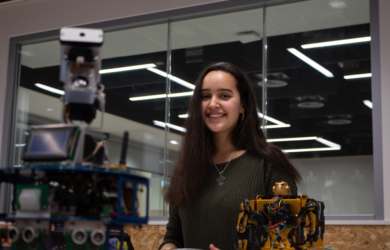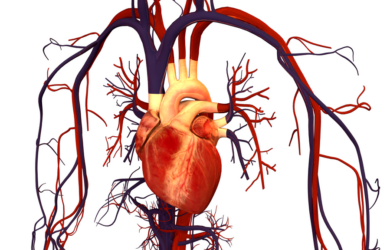
Dylan Griswold writes about his research on the need for more research and guidelines on traumatic brain injury in lower income countries.
In 2014 Hafsa Durrani tragically lost both of her brothers in a terrorist attack at Army Public School and College in Peshawar, where the terrorists executed 148 people in the school’s auditorium – 132 students, all the teachers, a lab assistant, a guard and the principal. Five years on, Hafsa, who is from a Pashtoon family in Shabqadar, is a fourth year medical student at the Northwest School of Medicine in Peshawar. The death of her brothers means has affected her family’s life in every way and her career. Her father can no longer work and so the financial responsibility falls upon her mother, a nurse. Hafsa says: “We rarely talk to each other or discuss anything whenever we're sitting together; it was never like this before but now we'll have complete silence for hours. I sometimes try to talk to my mom and all she has to reply with is, 'You talk too much, it's giving me a headache!’ My parents and parents of the rest of the martyred students have just forgotten what happiness is.”
When asked what motivated her to enrol in medical school, she says: “I wanted to be a doctor, but I had a lot of other interests too like becoming a teacher, an actress, a model, a painter and much more. However, my parents wanted me to be a doctor and how could I say no if I want to be the daughter who won't let them feel they don't have a son.” She admits, however, that the grief and sadness at home can overpower her sometimes, making her feel absentminded and forgetful and that makes her question her decision to stay at medical school sometimes since she is well aware that a doctor needs to stay in the present moment and cannot afford to make mistakes when a patient’s life is at stake. For now, though, she continues to perform at the top of her class.
Background
I met Hafsa at the International Conference on Recent Advances in Neurotraumatology (ICRAN) in Peshawar in November.
The experience cannot be understood without some explanation of the context in which it took place. The conference had been postponed from March due to conflicts at the Pakistan-Afghanistan border which made travel hazardous. Peshawar is the capital of the province of Khyber Pakhtunkhwa (KP) and the oldest city in Pakistan, indeed one of the oldest cities in South Asia. Geographically located in the North-Western region of the country, KP borders Afghanistan to both the west and the north. It is an ethnically diverse area, home to native Peshawaris, Pashtoons, Afghan immigrants and many other local tribes inhabiting the Federally Administered Tribal Areas (FATA).
The geographic and ethnic diversity of the province makes it difficult to govern. Members of the Taliban, al-Qaeda, and offshoots of the Islamic State of Iraq and the Levant (ISIL) find sanctuary in small pockets of the tribal areas. Among those who found sanctuary in KP was Osama Bin Laden, who was hiding in a compound in the city of Abbottabad. Yet, it was a top tribal area medic who helped the CIA run a fake hepatitis vaccine clinic to confirm Osama bin Laden’s presence in the compound.
The conference was held at the Pearl Continental hotel and to enter you had to pass through several security checkpoints. A massive 15-foot retractable steel door outside the compound only opened after paramilitary personnel inspected the vehicle’s passengers. Once inside the compound, the hood of the vehicle was opened and passengers had to go into a building to have a body scan and get their bags screened. Just outside the building, there was a machine gun bunker, followed by another checkpoint with a metal detector where I was frisked by a military officer. Only then was I permitted to walk the 100-metres to the hotel’s entrance.
It was only a couple of days later that I discovered that there had been a double-car bomb, a truck bomb, a suicide bomber and a joint gunman-suicide attack 10 years earlier which had killed 17 people, injured 46 and caused the hotel’s partial collapse. The bombing was in retaliation for the Pakistani military operations carried out against Taliban insurgents. It targeted foreigners and indirectly the humanitarian community for whom the hotel was a transit hub.
This background is essential if you want to understand how life has shaped and formed the Peshawari medical students, residents and physicians I met at the ICRAN conference like Hafsa.
Traumatic Brain Injury
The conference focused on Traumatic Brain Injury (TBI), the leading cause of death and disability worldwide. Of the estimated 69 million people who suffer from a TBI each year, 80% live in low-and-middle-income countries (LMICs). The dominant cause of TBI varies depending on the countries’ income, geographical region and level of political conflict. The proportion of TBI resulting from road traffic incidents is greatest in Africa and Southeast Asia and lowest in North America, while South America, the Caribbean and Sub-Saharan Africa represent the highest world incidence of TBI related to violence.
Unfortunately, the availability of neurosurgical services in LMICs is limited. 82% of neurosurgical volume exists in LMICs where approximately 56% of neurosurgeons reside. While Africa accounts for 15% of the global volume of neurosurgical disease, African hospitals and health care networks have access to less than 1% of the neurosurgeon community, with a ratio of roughly one neurosurgeon per 9 million people. An estimated 23,300 additional surgeons – approximately 11,300 in Southeast Asia, and 8,400 in Africa – are needed in LMICs to adequately address essential neurosurgical disease worldwide.
It is not difficult to see why the volume of TBI is so high in areas like Peshawar where hundreds of people on motorbikes drive without a helmet, weaving in and out of both “lanes of traffic”, missing lorries and speeding cars by inches. It is not uncommon to see four or five people travelling on the same motorbike – the father driving, one child in front of him, another behind him, and the mother facing the backside of the bike with a baby in her arms.
Dr Irfan Jan is a neurosurgery resident in Peshawar. He said that one of the challenging aspects for government sector hospitals is the shortage of neurosurgeons to meet the growing case volume. While Japan has 107 computed tomography (CT) scanners and 52 magnetic resonance imaging (MRI) units per million population, Pakistan has just 0.3 CT scanners and 0.2 MRI units per million population. Without such equipment, compromised diagnostic accuracy may affect treatment decision-making.
Dr Jan highlighted Peshawar’s status as a referral centre for KP regional and district hospitals without neurosurgical units. Some patients travel long distances, often dying on or soon after arrival. Pakistan’s literacy rate ranks 113 out of 120 countries, and in rural areas, the literacy rate is 63% for men and 36% for women. As a result, family members accompanying their loved one may have difficulty understanding what doctors are telling them. Dr Jan said that it is not uncommon for family members to physically assault members of the healthcare team who they deem responsible for their relative’s death.
By far the greatest contributor to the neurotrauma case volume in Peshawar is TBI secondary to a crash. Pakistan’s motorcycle helmet law, legislated in 1969, states, “no person shall drive, or ride the pillion (cushion for a second rider) of, a two-wheeled motor vehicle unless he is wearing a crash helmet”. A study was recently published which showed that, of the 109,210 motorcycle riders involved in a road traffic crash between 2007 to 2013 in Karachi, only 6% wore helmets, a percentage that fell to just 1% for pillion riders, usually women and children. Wearing a helmet reduced the likelihood of death by almost two thirds and of sustaining a serious head injury by one third. In 2013 a group of Pakistani officials scored the country’s enforcement level for the national helmet law at 2/10 and for their national seat belt law at 3/10. Mandatory helmet laws are urgently needed worldwide, and while these laws exist in Pakistan, they mean nothing without enforcement. Where helmet laws are enacted, strong enforcement has yielded a 40% reduction in the risk of death.
Policy guidelines
It is clear that global neurotrauma represents a significant burden in LMICs and a huge cost to society in the form of lost human capital. Thus, efforts to improve the quality of and access to neurotrauma care must be prioritised. These efforts can take many forms, but for maximum impact, policy changes must reflect the needs of neurotrauma healthcare systems. The United Nations Sustainable Development Goal (SDG) 3 is to ensure healthy lives and promote wellbeing for all at all ages. A robust surgical system is a cornerstone of universal health coverage. SDG targets aim to halve the number of global deaths and injuries from road traffic accidents by 2030. In this regard, surgeons, and in particular, neurosurgeons, have the added responsibility to provide strategic guidance and technical support to policymakers. Thus, a comprehensive set of policy recommendations for the management of head and spine injuries in LMICs was developed by an expert advisory committee and presented during the ICRAN conference.
These recommendations are designed to assist policymakers in developing contextualised national plans to reduce deaths and injuries from road traffic accidents. As the KP Health Department of Pakistan will be the first to integrate the recommendations into their provincial surgical obstetric and anaesthesia plan, the recommendations will be henceforth known as the “Peshawar Recommendations”.
Representative research
Action is also needed when it comes to research. Although 80% of TBI occurs in LMICs, over 89% of published papers on TBI come from USA, Europe, Canada, Australia and Japan. Furthermore, while we are seeing a sharp increase in the volume of TBI caused by road traffic accidents in LMICs with the 15-29-year-old age bracket most at risk, the population most at risk in HICs are babies and the elderly, with falls being the most common cause of injury. TBI from falls and road traffic accidents can both be severe, but the specific intracranial injuries identified on CT differ significantly and the care they receive may be substantially different.
In HICs, neurosurgeons depend on clinical practice guidelines to improve both the quality and process of care and patient outcomes. Yet the gold standard guidelines for the management of severe TBI – those developed by the Brain Trauma Foundation (BTF) – were developed by HICs for HICs. The setting of a study determines whether its findings are generalisable and can influence the practice of physicians in different settings. One of the main interventions in the treatment of TBI is a decompressive craniectomy, by which a large piece of skull is removed to accommodate the severe swelling of the brain. The two randomised trials that tested the efficacy of the procedure only enrolled patients who were managed in ICUs with advanced monitoring of intracranial pressure.
Yet most patients with TBI in LMICs do not have access to ICUs and intracranial pressure monitoring is rarely available. In the BTF guidelines it states that: “Patients with severe TBI should be transported directly to a facility with immediately available CT scanning, prompt neurosurgical care, and the ability to monitor intracranial pressure (ICP) and treat intracranial hypertension.” It is futile to apply existing guidelines in LMICs when the majority of hospitals meet zero of these requisites yet might admit 40 TBI patients every day and operate on over 10 of them.
It is imperative that the areas of the world where 80% of TBI occurs have access to guidelines specific to the trauma encountered and tailored to the resources available. It is not enough to rely on neurotrauma research from HICs and extrapolate results to develop guidelines in an LMIC. This requires that clinicians, policy makers, funding agencies, and university leaders from both HICs and LMICs come together to ensure this is made a reality.
My PhD project centres around the development of what we call “resource-stratified” guidelines. The development of these guidelines hinges upon high quality data collected from research driven by LMIC demand and need. Data from the poster I presented in Peshawar shows that, while the US allocates 18% of its GDP towards total healthcare expenditure, most sub-Saharan African countries allocate less than 5%, with many countries in South Asia allocating less than 3%. While a country’s allocation of GDP towards healthcare is not the same as research funding for neurosurgical randomised control trials, it is helpful to show how countries with the highest percentage of GDP allocated towards healthcare also lead the most neurosurgical research trials.
LMIC governments should be encouraged and incentivised to support research. Economic data shows how untreated neurosurgical disease affects national GDP and how investing in more trials centred around TBI and stroke-related disease will lead to a decrease in disability-adjusted life years and thus help cushion against the enormous economic loss.
Neurosurgeons and researchers from HICs who are interested in advancing global neurosurgery should aim to develop equitable partnerships with neurosurgeons and researchers from LMICs. Policy makers, funding agencies and universities, all working together, are essential to building LMIC-led, sustainable research capacity. In 2017, the UK Department of Health allocated more than $200 million to stimulate research that would directly benefit patients in LMICs. Of that, over $2.3 million was awarded to establish the NIHR Global Health Research Group on Neurotrauma. This is the group I am doing my PhD with. The group is composed of clinicians and researchers from 11 LMICs and three HICs, with the aim of creating centres of excellence with research programmes directly focused on improving disparities in neurosurgical care.
For that reason, it was the relationships built and relationships strengthened that made the ICRAN meeting in Peshawar most meaningful for me. I have continued to keep in touch with Hafsa and Dr Jan regularly and hope to return soon.
*With thanks to the Gates Cambridge Trust, the NIHR Global Health Research Group on Neurotrauma and my PhD advisors Professor Peter Hutchinson, the group’s director, and Angelos Kolias, the group’s junior co-director, who funded my conference registration and travel.
**Dylan Griswold [2019] is doing his PhD in Clinical Neurosciences. He is pictured at the ICRAN conference with fellow attendees, including Hafsa Durrani on his right. The research Dylan presented at the conference was commissioned by the National Institute for Health Research (NIHR) Global Health Research Group on Neurotrauma (project 16/137/105) using UK aid from the UK Government. The views expressed in this publication are those of the author(s) and not necessarily those of the NIHR or the Department of Health and Social Care.

Dylan Griswold
- Alumni
- United States
- 2019 PhD Clinical Neurosciences
- St John's College
I’ve wanted to become a doctor since third grade. Although I was pre-med at Williams, I was also playing baseball, and my aspirations to continue playing after graduation began to take priority. I went to San Francisco the summer after my sophomore year in preparation for a professional tryout, but I tore a ligament in my elbow, requiring two surgeries. Unable to pitch, I began looking for volunteer work. A mentor pointed me to an AIDS hospice home operated by Mother Teresa’s order of nuns. There, I learned how to care for patients, my Catholic faith informing my love for the one who lay beside me. The following summer, I went to Haiti, where I was struck by the almost non-existent access to neurosurgical care. After spending the following year in the neurosurgery lab at UCSF, my desire to become a neurosurgeon was born. I matriculated to Stanford for medical school and developed an interest in connecting clinical practice with research and policy, leading to summer research at WHO in 2017. This past summer, at Cambridge, my team focused on surgical management of neurotrauma in low-resource settings. I am tremendously grateful for the opportunity to continue working with the global neurotrauma team at Cambridge to develop best-practice guidelines for neurotrauma in low-resource settings. As an MD, PhD candidate, I hope to become an academic leader capable of managing complex neurosurgical disease in addition to affecting policy to improve universal access to safe and affordable surgical care. Finally, I give thanks to God, abandoning myself to His plan for my life.
Previous Education
Stanford University Doctor of Medicine Neurosurgery 2021
Williams College B.A. Chemistry 2015












